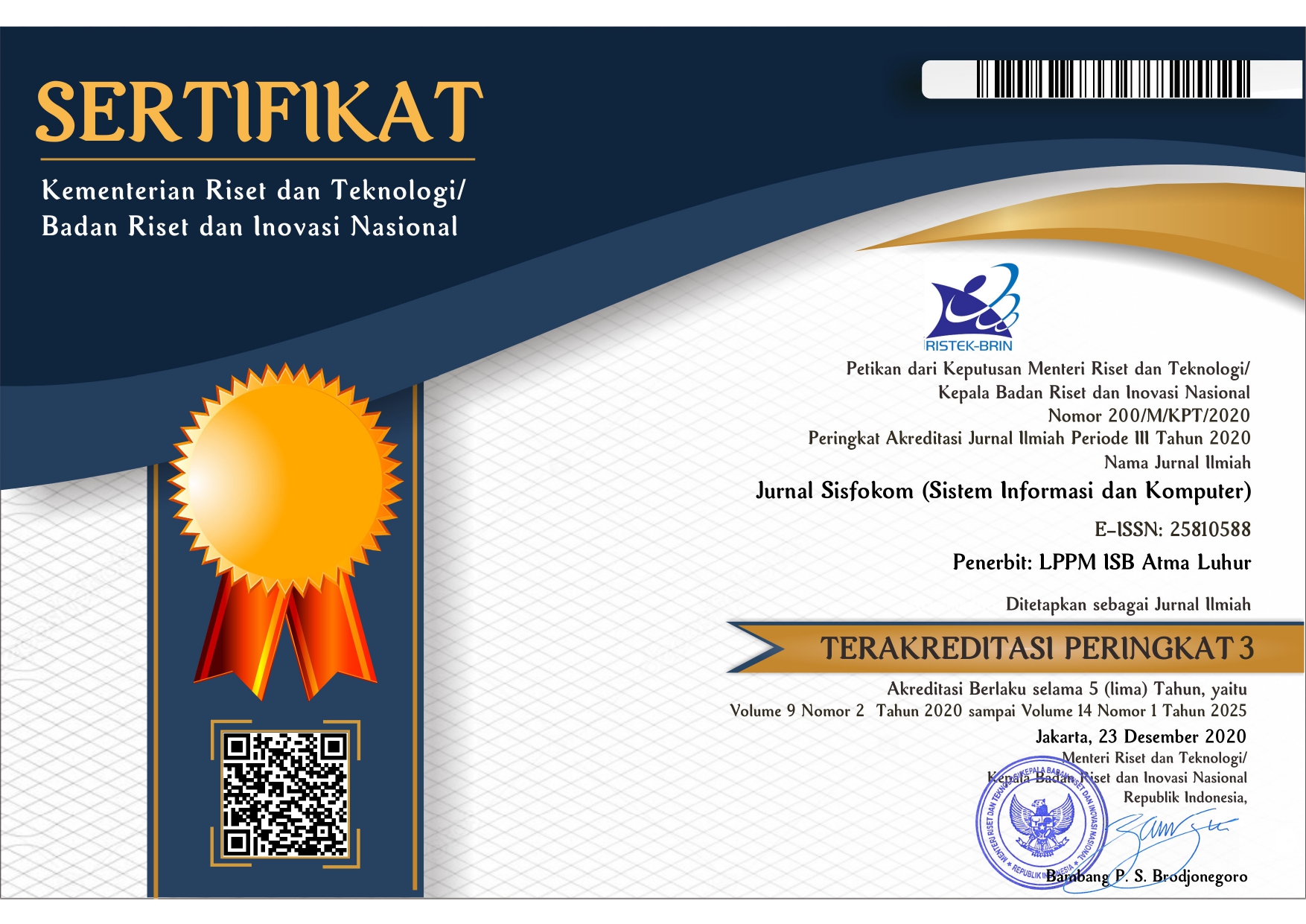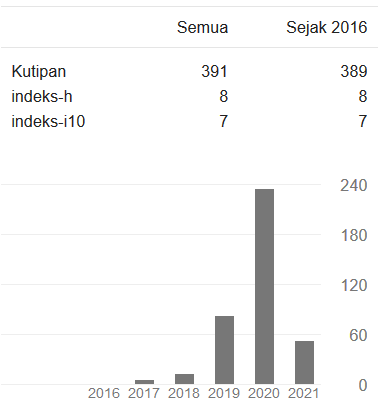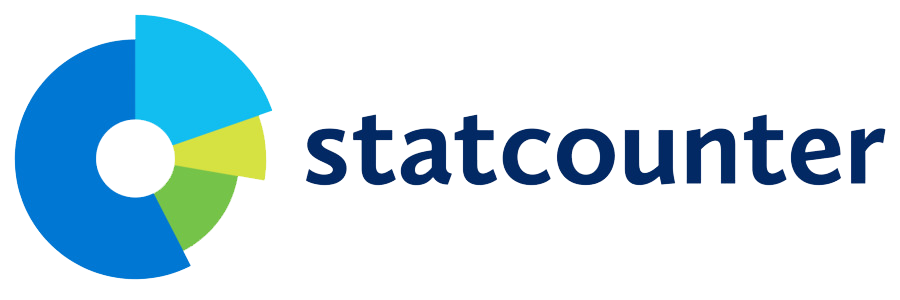Determinan Penggunaan E-Class sebagai Learning Management System oleh Tenaga Pendidik di Masa Pandemi Covid-19: Pendekatan Model UTAUT
DOI:
https://doi.org/10.32736/sisfokom.v11i3.1361Keywords:
Learning Management System, E-Class, UTAUT, Sistem Informasi.Abstract
Penelitian ini bertujuan untuk memperoleh gambaran tentang determinan perilaku pengguna E-Class di Universitas Merdeka Malang khususnya para pendidik. E-Class merupakan Learning Management System yang dibuat oleh Universitas Merdeka Malang sebagai sarana proses belajar mengajar berbasis online. Universitas Merdeka Malang telah merespon kebijakan pemerintah terkait regulasi pelaksanaan pembelajaran formal online akibat pandemi Covid-19. Namun untuk mengukur keberhasilan penerapan sistem informasi baru berupa E-Class. Peneliti mengusulkan penelitian ini dimana penerapan model UTAUT adalah untuk mengetahui determinan perilaku pengguna E-Class. Penelitian ini merupakan penelitian eksplanatori dengan pendekatan kuantitatif. Data penelitian ini adalah data primer. Analisis yang digunakan adalah analisis regresi linier berganda dengan alat statistik SmartPLS 3.0. Populasi dalam penelitian ini adalah seluruh tenaga pendidik di Universitas Merdeka Malang. Metode sampel yang digunakan adalah purposive sampling. Hasil penelitian ini menjelaskan bahwa variabel ekspektasi usaha dan pengaruh sosial berpengaruh positif terhadap niat berperilaku. Niat perilaku memiliki efek positif pada perilaku penggunaan. Sedangkan variabel harapan kinerja dan kondisi fasilitasi tidak berpengaruh terhadap niat perilaku dan perilaku penggunaan. Variabel modifikasi berupa corona fear juga tidak berpengaruh terhadap hubungan semua variabel independen terhadap behavioral intention.References
V. Venkatesh, M. G. Morris, G. B. Davis, and F. D. Davis, “User Acceptance of Information Technology: Toward A Unified View,” MIS Q., vol. 27, no. 3, pp. 425–478, 2003.
S. R. Natasia, Y. T. Wiranti, and A. Parastika, “Acceptance analysis of NUADU as e-learning platform using the Technology Acceptance Model (TAM) approach,” Procedia Comput. Sci., vol. 197, no. 2021, pp. 512–520, 2021, doi: 10.1016/j.procs.2021.12.168.
Y. H. S. Al-Mamary, “Understanding the use of learning management systems by undergraduate university students using the UTAUT model: Credible evidence from Saudi Arabia,” Int. J. Inf. Manag. Data Insights, vol. 2, no. 2, 2022, doi: 10.1016/j.jjimei.2022.100092.
B. A. Akinnuwesi et al., “A modified UTAUT model for the acceptance and use of digital technology for tackling COVID-19,” Sustain. Oper. Comput., vol. 3, no. December 2021, pp. 118–135, 2022, doi: 10.1016/j.susoc.2021.12.001.
M. M. M. Abbad, “Using the UTAUT model to understand students’ usage of e-learning systems in developing countries,” Educ. Inf. Technol., vol. 26, no. 6, pp. 7205–7224, 2021, doi: 10.1007/s10639-021-10573-5.
A. Aldiab, H. Chowdhury, A. Kootsookos, F. Alam, and H. Allhibi, “Utilization of Learning Management Systems (LMSs) in higher education system: A case review for Saudi Arabia,” Energy Procedia, vol. 160, no. 2018, pp. 731–737, 2019, doi: 10.1016/j.egypro.2019.02.186.
S. A. Raza, W. Qazi, K. A. Khan, and J. Salam, “Social Isolation and Acceptance of the Learning Management System (LMS) in the time of COVID-19 Pandemic: An Expansion of the UTAUT Model,” J. Educ. Comput. Res., vol. 59, no. 2, pp. 183–208, 2021, doi: 10.1177/0735633120960421.
N. U. Ain, K. Kaur, and M. Waheed, “The influence of learning value on learning management system use: An extension of UTAUT2,” Inf. Dev., vol. 32, no. 5, pp. 1306–1321, 2016, doi: 10.1177/0266666915597546.
S. Lonn, S. D. Teasley, and A. E. Krumm, “Who needs to do what where?: Using learning management systems on residential vs. commuter campuses,” Comput. Educ., vol. 56, no. 3, pp. 642–649, 2011, doi: 10.1016/j.compedu.2010.10.006.
V. Venkatesh, J. Y. L. Thong, and X. Xu, “Consumer Acceptance and Use of Information Technology: Extending the Unified Theory of Acceptance and Use of Technology,” MIS Q., vol. 36, no. 1, pp. 157–178, 2012, doi: 10.1109/MWSYM.2015.7167037.
E. S. Nuari, A. Nurkhin, and K. Kardoyo, “Analisis Determinan Pemanfaatan Edmodo Dengan Menggunakan Unified Theory of Acceptance and Use of Technology (Utaut),” J. Pendidik. Akunt. Indones., vol. 17, no. 1, pp. 57–73, 2019, doi: 10.21831/jpai.v17i1.26337.
A. Primadita and N. A. Haryono, “Dinamika Bisnis Selama Pandemi Covid-19 pada Tingkat Likuiditas Perusahaan Pertanian dan Consumer Goods di Indonesia,” Bus. Manag. Anal. J., vol. 4, no. 1, pp. 97–120, 2021, doi: 10.24176/bmaj.v4i1.6039.
W. W. Chin, B. L. Marcolin, and P. R. Newsted, “a Partial Least Squares Latent Variable Modeling Approach for Measuring Interaction Effects: Results From a Monte Carlo Simulation Study and Voice Mail Emotion/Adoption Study,” Proc. 17th Int. Conf. Inf. Syst. ICIS 1996, no. May 2014, pp. 21–41, 1996.
U. Sekaran and R. J. Bougie, Metode Penelitian Untuk Bisnis. Dalam Metode penelitian Untuk Bisnis. Jakarta: Salemba Empat, 2017.
Jogiyanto, Metodologi Penelitian Sistem Informasi. Yogyakarta: Andi, 2008.
M. Dečman, “Modeling the acceptance of e-learning in mandatory environments of higher education: The influence of previous education and gender,” Comput. Human Behav., vol. 49, pp. 272–281, 2015, doi: 10.1016/j.chb.2015.03.022.
A. A. A. Zwain, “Technological innovativeness and information quality as neoteric predictors of users’ acceptance of learning management system: An expansion of UTAUT2,” Interact. Technol. Smart Educ., vol. 16, no. 3, pp. 239–254, 2019, doi: 10.1108/ITSE-09-2018-0065.
Downloads
Published
Issue
Section
License
The copyright of the article that accepted for publication shall be assigned to Jurnal Sisfokom (Sistem Informasi dan Komputer) and LPPM ISB Atma Luhur as the publisher of the journal. Copyright includes the right to reproduce and deliver the article in all form and media, including reprints, photographs, microfilms, and any other similar reproductions, as well as translations.
Jurnal Sisfokom (Sistem Informasi dan Komputer), LPPM ISB Atma Luhur, and the Editors make every effort to ensure that no wrong or misleading data, opinions or statements be published in the journal. In any way, the contents of the articles and advertisements published in Jurnal Sisfokom (Sistem Informasi dan Komputer) are the sole and exclusive responsibility of their respective authors.
Jurnal Sisfokom (Sistem Informasi dan Komputer) has full publishing rights to the published articles. Authors are allowed to distribute articles that have been published by sharing the link or DOI of the article. Authors are allowed to use their articles for legal purposes deemed necessary without the written permission of the journal with the initial publication notification from the Jurnal Sisfokom (Sistem Informasi dan Komputer).
The Copyright Transfer Form can be downloaded [Copyright Transfer Form Jurnal Sisfokom (Sistem Informasi dan Komputer).
This agreement is to be signed by at least one of the authors who have obtained the assent of the co-author(s). After submission of this agreement signed by the corresponding author, changes of authorship or in the order of the authors listed will not be accepted. The copyright form should be signed originally, and send it to the Editorial in the form of scanned document to sisfokom@atmaluhur.ac.id.









